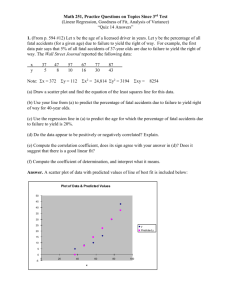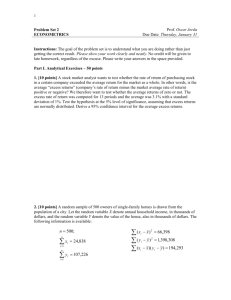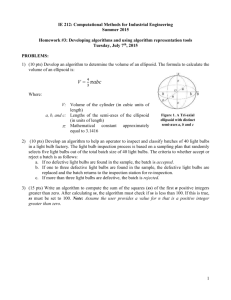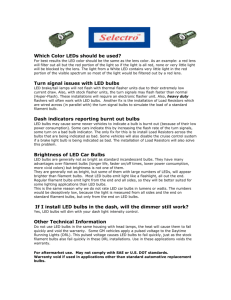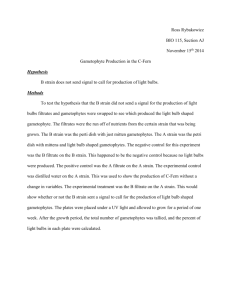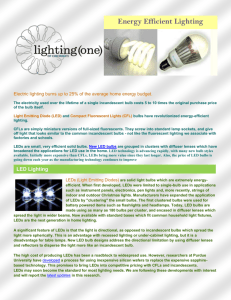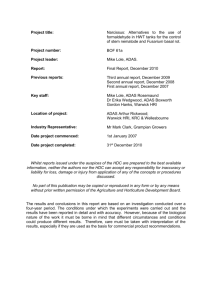ap statistics
advertisement
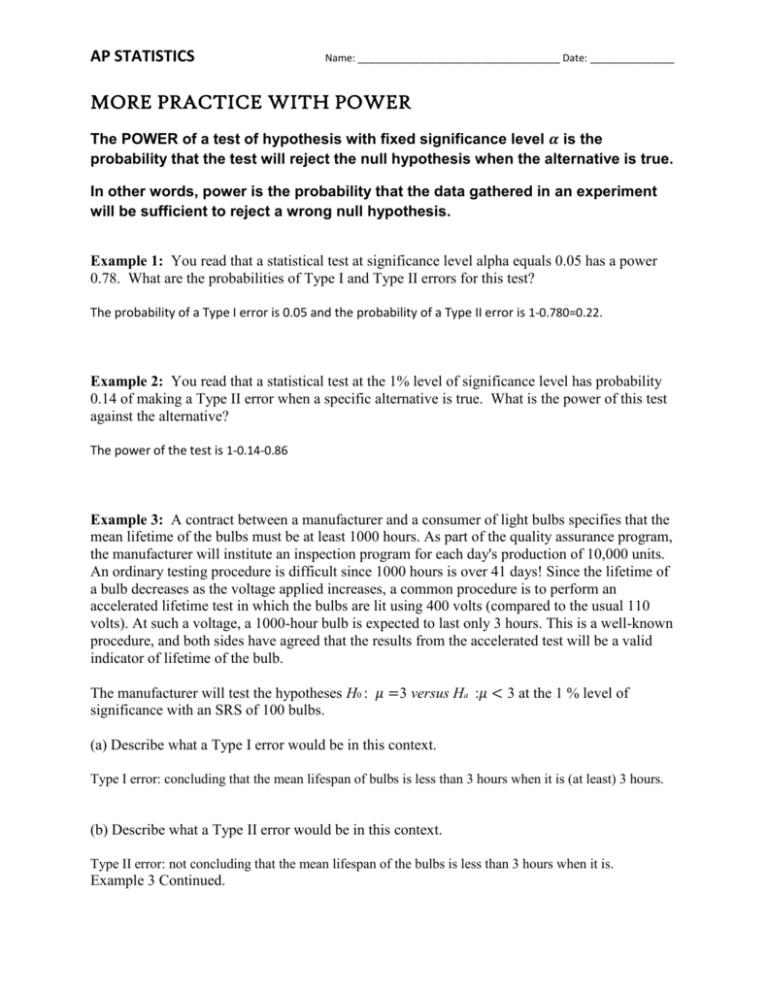
AP STATISTICS Name: ____________________________________ Date: _______________ MORE PRACTICE WITH POWER The POWER of a test of hypothesis with fixed significance level 𝜶 is the probability that the test will reject the null hypothesis when the alternative is true. In other words, power is the probability that the data gathered in an experiment will be sufficient to reject a wrong null hypothesis. Example 1: You read that a statistical test at significance level alpha equals 0.05 has a power 0.78. What are the probabilities of Type I and Type II errors for this test? The probability of a Type I error is 0.05 and the probability of a Type II error is 1-0.780=0.22. Example 2: You read that a statistical test at the 1% level of significance level has probability 0.14 of making a Type II error when a specific alternative is true. What is the power of this test against the alternative? The power of the test is 1-0.14-0.86 Example 3: A contract between a manufacturer and a consumer of light bulbs specifies that the mean lifetime of the bulbs must be at least 1000 hours. As part of the quality assurance program, the manufacturer will institute an inspection program for each day's production of 10,000 units. An ordinary testing procedure is difficult since 1000 hours is over 41 days! Since the lifetime of a bulb decreases as the voltage applied increases, a common procedure is to perform an accelerated lifetime test in which the bulbs are lit using 400 volts (compared to the usual 110 volts). At such a voltage, a 1000-hour bulb is expected to last only 3 hours. This is a well-known procedure, and both sides have agreed that the results from the accelerated test will be a valid indicator of lifetime of the bulb. The manufacturer will test the hypotheses H0 : 𝜇 =3 versus Ha :𝜇 < 3 at the 1 % level of significance with an SRS of 100 bulbs. (a) Describe what a Type I error would be in this context. Type I error: concluding that the mean lifespan of bulbs is less than 3 hours when it is (at least) 3 hours. (b) Describe what a Type II error would be in this context. Type II error: not concluding that the mean lifespan of the bulbs is less than 3 hours when it is. Example 3 Continued. AP STATISTICS Name: ____________________________________ Date: _______________ (c) Which error—Type I or Type II—is likely to do more damage to the manufacturer’s relationship with the consumer? Explain. A Type II error is probably more problematic, since it means the consumer would be purchasing bulbs that don’t last as long as promised. (d) The manufacturer determines that the power of this test (when 𝛼 = 0.01) against the alternative 𝜇 =2.8 is 0.42. Explain what this means in context. Power =;1qa ;; 0.42 measures the probability of correctly rejecting the null hypothesis and concluding that the true mean life span is below 3 hours when it is in fact 2.8 hours. (e) Describe two ways the manufacturer can increase the power of this test. Increase power by increasing sample size or increasing the significance level. Example 4: A researcher plans to conduct a significance test at the 1% level of significance. She designs her study to have a power of 0.90 at a particular alternative value of the parameter of interest. What is the probability that the researcher will commit a Type II error the particular alternative value of the parameter at which she computed the power? 0.10








